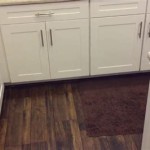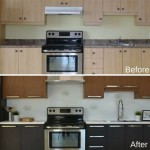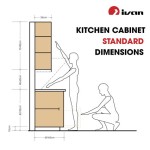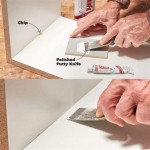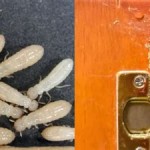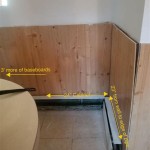How to Get Rid of Greasy Kitchen Cabinets
Grimy and greasy kitchen cabinets can be an eyesore and a breeding ground for bacteria. Fortunately, getting rid of this unappealing residue is a relatively simple task with the right tools and techniques.
Step 1: Gather Your Materials
You will need:
- Warm water - Dishwashing liquid or degreaser - Soft cloths or sponges - Baking soda or white vinegar - Microfiber clothsStep 2: Clean the Cabinets
Mix a solution of warm water and dishwashing liquid or degreaser. Dip a soft cloth or sponge into the solution and wring it out until it is damp. Wipe down the cabinets thoroughly, making sure to get into all the nooks and crannies.
Step 3: Remove Tough Grease
For tough grease stains, you may need to use a stronger solution. Make a paste of baking soda and water or white vinegar and water. Apply the paste to the stain and let it sit for 15-20 minutes. Then, wipe the stain away with a damp cloth.
Step 4: Rinse and Dry the Cabinets
After cleaning the cabinets, rinse them thoroughly with clean water. Use a microfiber cloth to dry them. This will help prevent streaks and water spots.
Step 5: Protect the Cabinets
To keep your cabinets looking clean and grease-free, you can apply a thin layer of furniture polish or wax. This will create a barrier that will resist grease and dirt.
Additional Tips
- Clean your cabinets regularly to prevent grease from building up. - Use a degreasing cleaner specifically designed for kitchen cabinets. - Test any cleaning solution on an inconspicuous area before using it on the entire cabinet. - If you have cabinets with a lot of grease buildup, you may need to hire a professional cleaner.

3 Ways To Clean Greasy Kitchen Cabinets Wikihow

How To Clean Sticky Grease Off Kitchen Cabinets Ovenclean

How To Remove Grease From Kitchen Cabinets 3 Methods Bob Vila

How To Clean Grimy Kitchen Cabinets With 2 Ingredients

How To Clean Kitchen Cabinets Everyday Skate

Clean Kitchen Cabinets Off With These Tips And Hints

Removing Grease From Kitchen Cabinets House Cleaning Tips Safe S Clean

How To Clean Sticky Grease Off Kitchen Cabinets

I M A Cleaning Whizz And My 80p Method Is Perfect For Getting Rid Of Grease Build Up On Your Kitchen Cabinets The Sun

How To Quickly Clean Cabinets Remove Grease Gunk Andrea 49 Off
Related Posts

